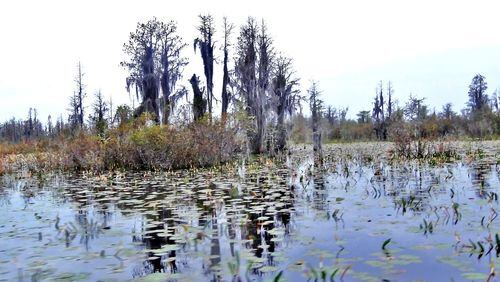If you have resolved to spend more time in Georgia’s outdoors and explore its rich natural heritage, you will have plenty of opportunities to do so in 2017. Several nonprofit organizations have lined up a year’s worth of outings in Georgia’s wild places to enjoy and understand its amazing diversity.
Some of the groups offering the trips — many of which are free and open to the public — include:
• The Georgia Botanical Society, which has more than 50 field trips scheduled during 2017 to nearly every corner of Georgia, from the Okefenokee Swamp to Tallullah Gorge. The society's aim is to explore Georgia's rich array of native flora, which includes 3,600 species of vascular plants (which does not include mushrooms) and 205 tree species or varieties — more than in all of Europe. For the society's 2017 field trip lineup, visit gabotsoc.org.
• Atlanta Audubon Society. Some 400 native bird species live in Georgia at least part of the year. You can see and learn about many of them firsthand if you go on some of the society's bird walks held throughout the year. For a calendar of outings, visit atlantaaudubon.org/field-trips.
• Georgia state parks. Many state parks offer guided walks all year long to observe and learn about wildlife, from birds to butterflies, from wildflowers to mushrooms. Some parks also offer outings to explore local geology; some hold astronomy nights to observe stars and planets through telescopes. For a list of events, visit gastateparks.org/events.
Many other groups also offer nature-watching outings, including the Georgia Conservancy, Georgia ForestWatch, Nature Conservancy of Georgia, Georgia Native Plant Society, Georgia Sierra Club, Chattahoochee Riverkeeper, the Mushroom Club of Georgia and others. Google each group on the Internet to learn more about its outings,
In the sky: From David Dundee, Tellus Science Museum astronomer: The Quadrantid meteor shower will be visible all next week, reaching a peak of about 80 meteors per hour Wednesday and Thursday nights. Look to the north after dark until dawn.
The moon will be first-quarter Thursday. Mercury and Venus are low in the west and Mars is low in the southwest around dusk. Jupiter rises out of the east around midnight.
About the Author






